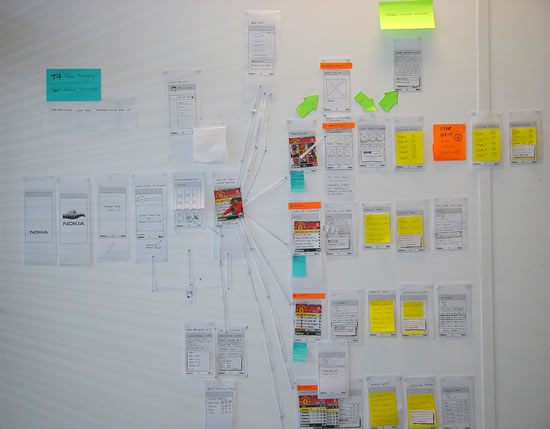11.1: Paper Prototyping as a Core Tool in the Design of Cell Phone User Interfaces
Overview
Paper prototyping is increasingly being used by cell phone companies as a core part of their design process. This approach is replacing the old adage of 'throwing the technology at users to see if it sticks.' There is much competition in the cell phone industry demanding ever more new concepts. Mobile devices are feature-rich. They now include mega-pixel cameras, music players, media galleries, and downloaded applications and more. This requires designing complex interactions, but ones which are clear to learn and use. Paper prototyping offers a rapid way to work through every detail of the interaction design across multiple applications.
Cell phone projects involve a range of disciplines-all with their own viewpoint on what the product should be. A typical project may include programmers, project managers, marketing experts, commercial managers, handset manufacturers, user experience specialists, visual designers, content managers, and network specialists. Paper prototyping provides a vehicle for everyone involved to be part of the design process-considering the design from multiple angles in a collaborative way.
This case study describes the benefits of using paper prototyping from a designers' viewpoint while considering the bigger picture of its impact across the entire project lifecycle. It starts by explaining the problem space and how paper prototyping is used as an integrated part of UI design projects for European and US-based mobile operator companies. It uses project examples to illustrate the approach and explains step-by-step how the method can be used to include a range of stakeholders in the design process-regardless of their skill set or background. The case study offers exercises so you can experiment with the approach yourself.

